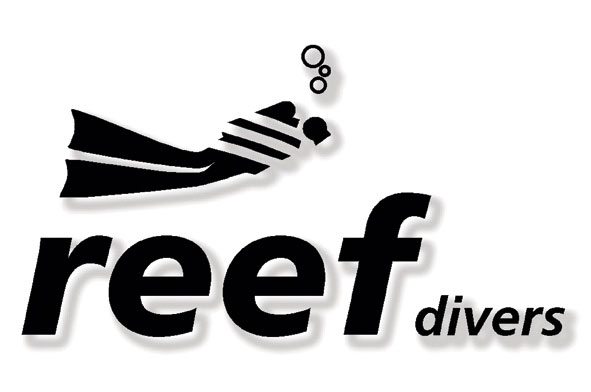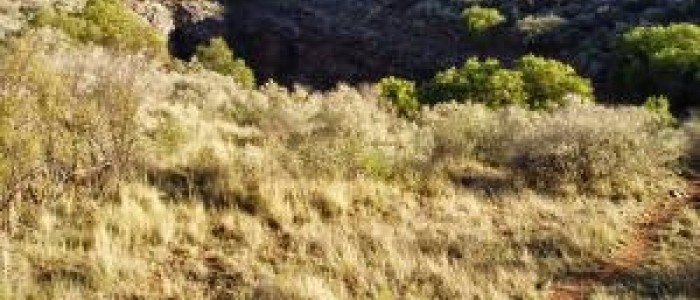This was written two years after Dave Shaw's death on 8 January 2005 and published in the South African Divestyle magazine. The poem at the end was written by my mother at the time of Dave Shaw’s death.
The morning sun burst on the scene like a naughty child, running from tree to tree to rock to tree, setting the scene alight with life. A lazy herd of wildebeest are diluted with Zebra, their pajamas hiding them in the shadows beneath the hardy Kalahari acacias. The animals move slowly at first, then thunder away when the guttural noise of the Landcruiser’s diesel break them up, only to stop a few hundred paces further to stare at the strangely laden animal driving up the side of the hill.
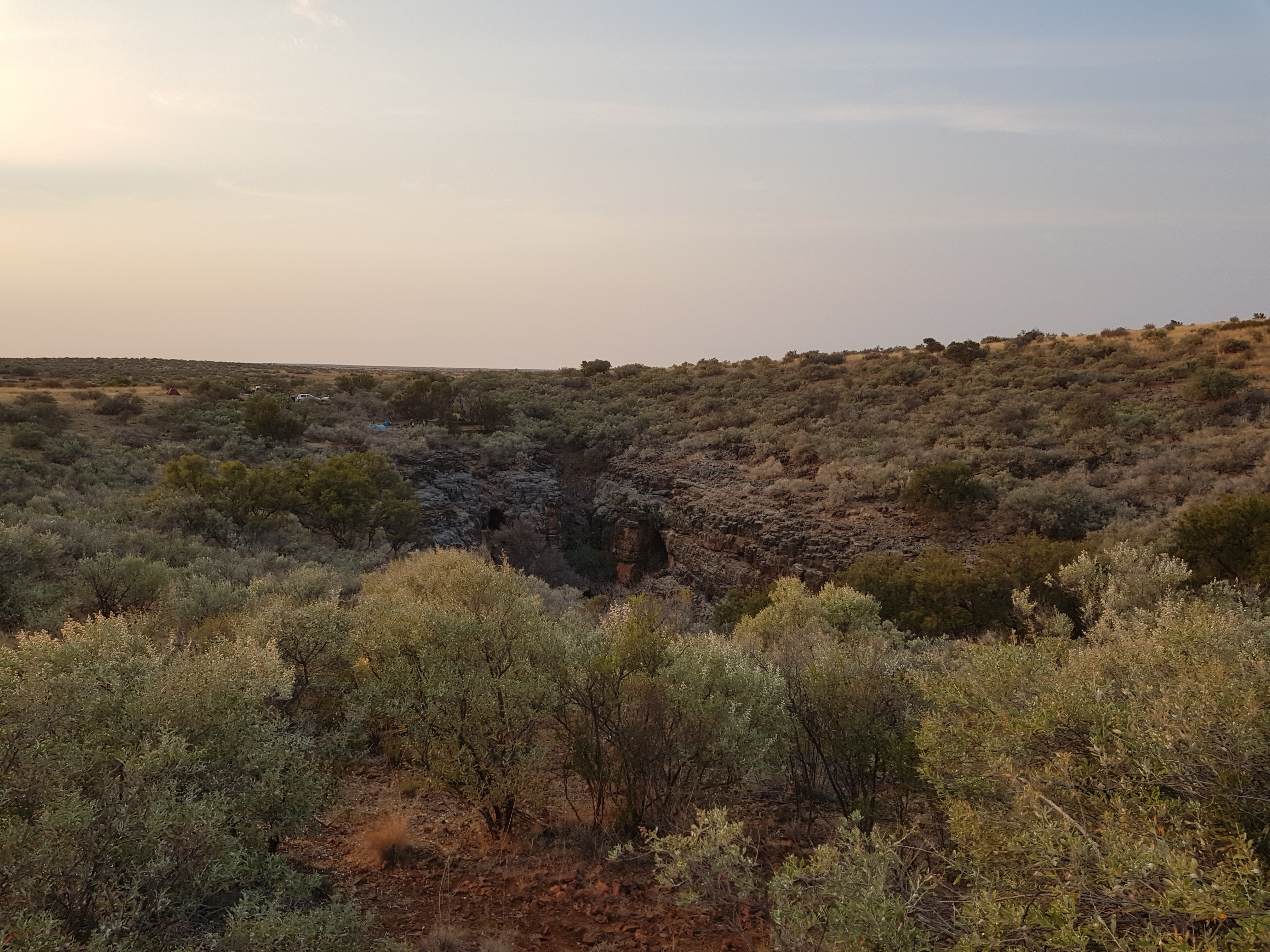
The gash. The first impression. The side of the hill collapses, falls away sharply, disappears. This is what we came to see, Boesmansgat. As the sun lazily saunters into the sky after its initial dash, the hole slowly lights up, the scenery unfolds magically and colour gets added to the ever lightning darkness below. This is Boesmansgat. The Kalahari. Semi-desert. Huge underground water reservoirs with hardly any showing on the surface. Mother Nature rented the surface eons ago in what must have been a thunderous ovation to the might of the earth, tearing down 80 m deep, a gash 120 m long, a deep scratch mark in earth’s crust, hurting and exposing the lifeblood below. Water.
The nearby Wonder Cave is one of the longest inhabited caves in the world, people have lived here for hundreds of thousands of years. People have marveled at the wonder and mystique of Boesmansgat for hundreds of thousands of years. Imagine the stories that must have been told around camp and cooking fires, the legends that were created, the mysteries of its depths. The San Bushman tells of a watersnake that lives here… a mythical creature that took the lives of those that maybe slipped and fell in, man and beast, never to be seen again. A snake that took the lives of modern man, of man that never even knew the snake existed…
Science tells us that Boesmansgat was caused by soluble dolomite, water dissolving rock over millennia, carving a cathedral, an immense water filled cavity, massive beyond comprehension.
At almost 300 m deep, 120 long and 100 wide this is considered to be one of the largest fresh water filled caverns in the world. Science cannot explain what we experience here, the 60 m straight wall with a small insignificant duckweed covered pool at its base, a garden pond. a Garden Pond that rests on a 3.6 million cubic meter water foundation…
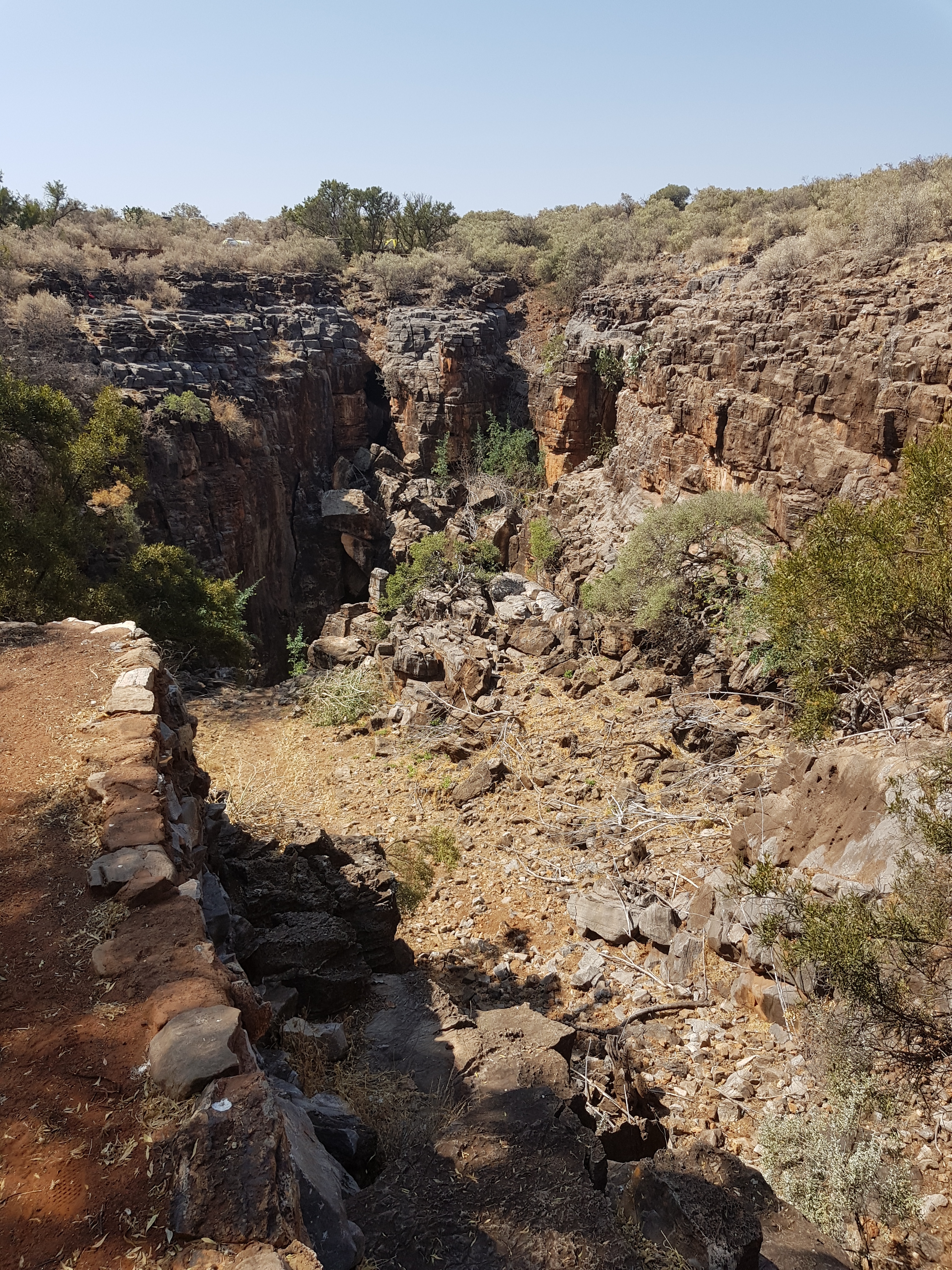
Modern man started exploring this underwater mystery in 1977 already. Man has gone deeper and farther since those early days, boosted by technology and driven by sheer willpower and sometimes simply stupidity.
Slip into the unknown depths through a 1.5m wide gap, slightly longer than 3 m, the small end of an ice-cream cone, and like a cone widening slowly until at 50 m…the void, a place where the sides disappear, the floor goes from a 50-degree angle to straight down, down into blackness. The blue skies above replaced by a craggy roof, sharp and cutting and crumbly and vast. So vast that the sharpest torchlight disappears, absorbed by the brownness of Swiss cheese dolomite, the torch beams a Jedi light saber that splits the darkness and cuts a swathe of light through the water, water so clear that the light points of other Jedi Knights are visible as pure violet pinpricks as far as 100m away.
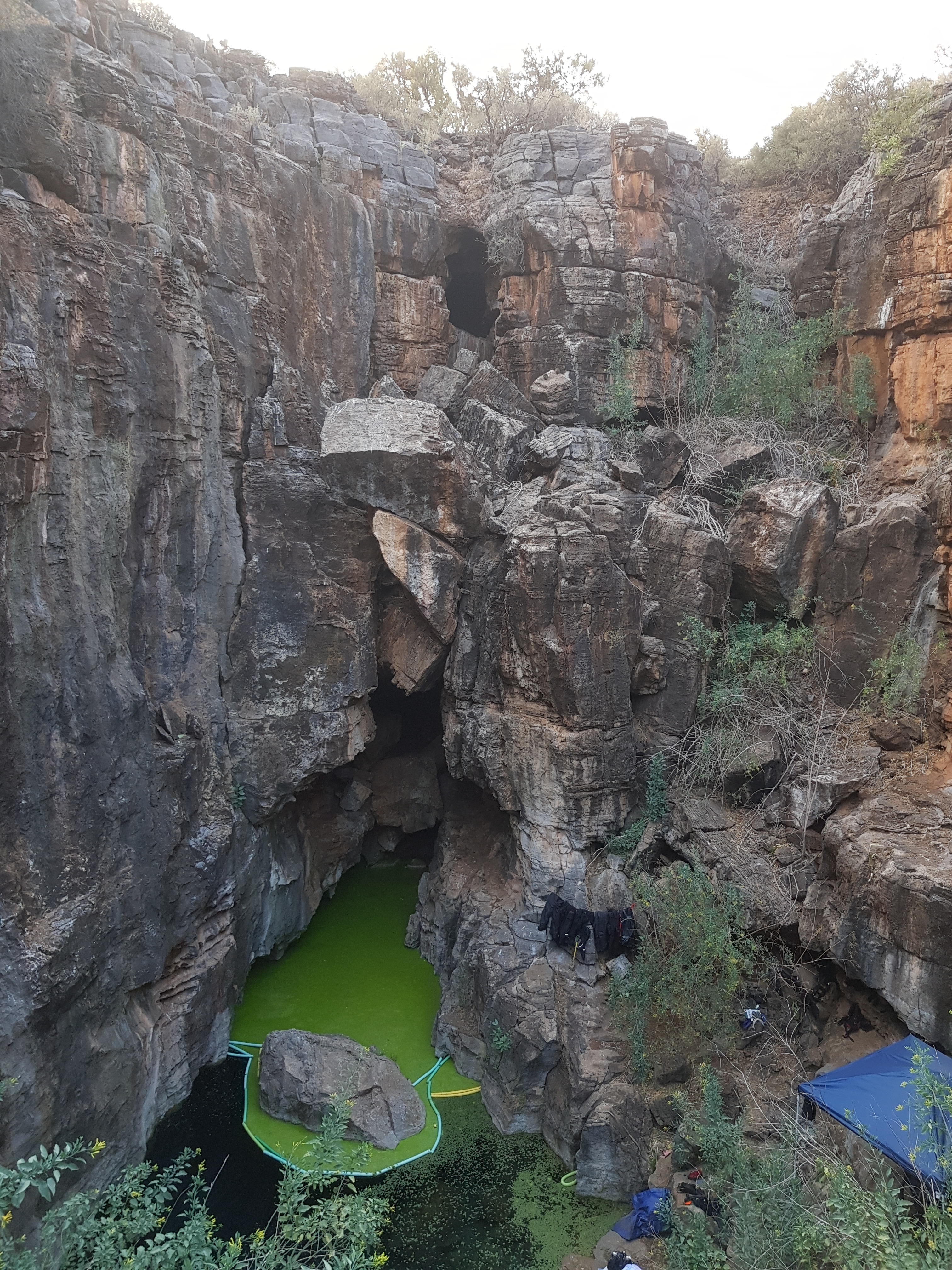
When diving deeper one is invariably alone; the depth alone becomes a mesh, slowly sifting divers until only the finest remains, alone. Alone in Boesmansgat. Alone with yourself, your God – whatever you might perceive him to be. Alone.
You focus inwardly, the world goes away, you are in, and part of, one of the greatest natural wonders of the world, your insignificance a reality and not doubt anymore. Rising from the depths one looks up in awe and wonder at the triangle of lights, the three holes that allows meagre light into the narrow reaches of the cone, shafts of light promising blue sky, open air and safety, so close in distance yet so far away in time – your decompression obligation slowing the last few meters until they are measured in hours.
On 23 August 1996, Boesmansgat became the deepest place Man has ever dived to unassisted, when a stocky, bright-eyed Nuno Gomes, a South African of Portuguese decent, dived to a depth of 282.6 m, a Guinness book of records dive that remained unbroken for almost ten years and a cave depth record that still stands today.
This Dark Cathedral has become legendary once more in recent times; the snake reared its ugly head and took another bite. December 17th 1994, it swallowed and vowed not to return the young Deon Dreyer. Modern science was not up to the task in finding its prey, not for ten years. Then the prey was found, but the Snake struck again… What followed added to the lure of Boesmansgat. For ten days in January 2005 Boesmansgat was world news, the human craving to be fed with tragedy and pain more than satisfied. Dave Shaw lost his life in attempting to recover the remains of Deon, which he discovered on a record-breaking dive in October 2004. Then the Snake gave up, finally. Disturbed by divers 200 m above them, the two divers, fatally intertwined by the very cave line that saves and takes lives; assisted by ever-expanding buoyancy, shot to the cave roof. The blue sky was once again on their faces.
We get back in the cruiser, tired after a long day's diving, bodies sore from carrying loads of gear down a loose shale covered footpath, an almost vertical drop at places, an 80-meter drop from rim to bottom.
The sun is painting the Kalahari. Red. The shadows deepen, the colours go, the darkness returns. a Lone Cameroon mountain goat balances on the edge. We leave. Four Eland witness the dwindling dust of our truck.
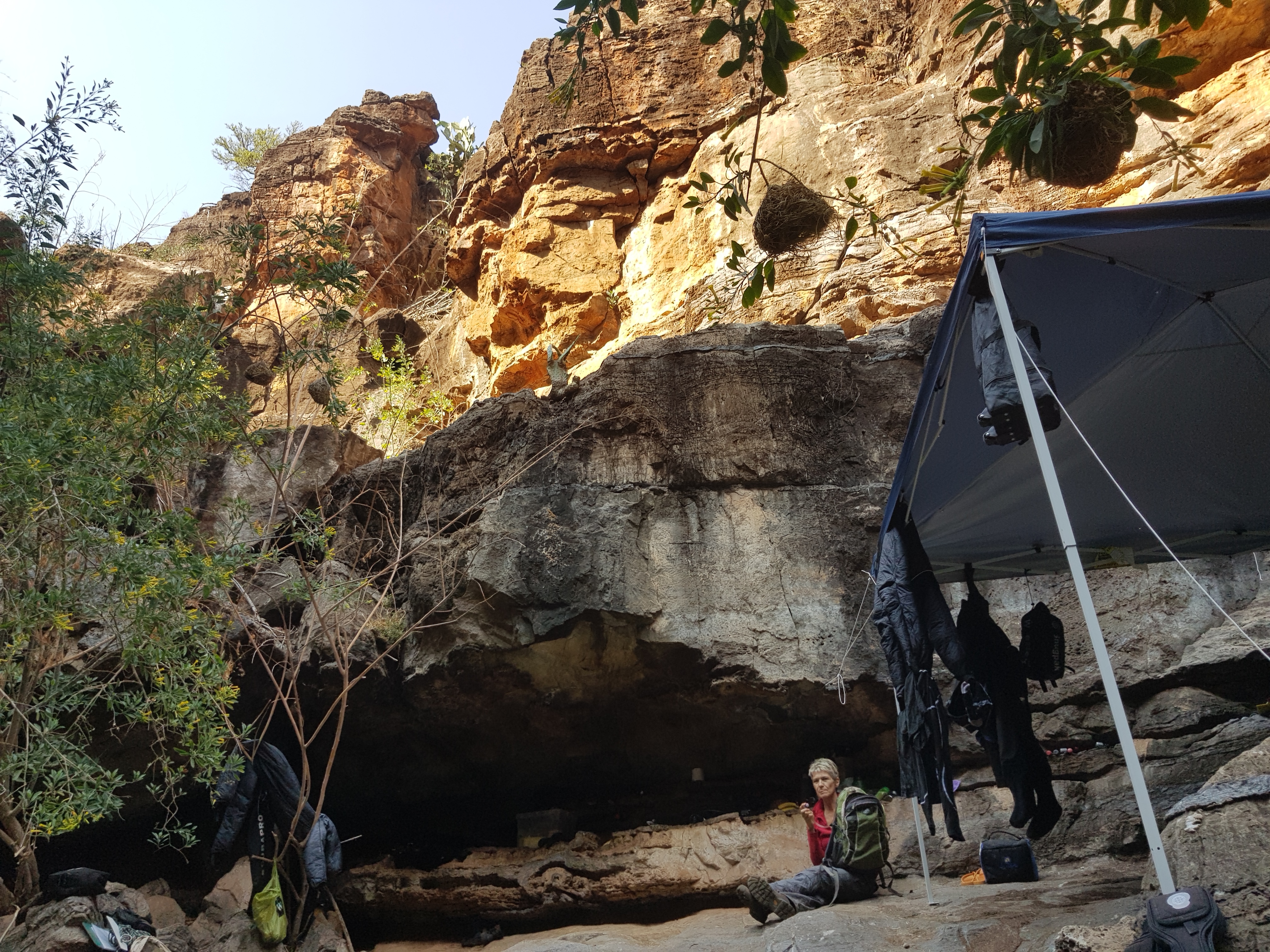
—————————————————————————————-
Boesmansgat (literary Bushman’s hole – where the bushman go (for water) is on the farm Mount Carmel in the Northern Cape bordering the Kalahari between Kuruman and Danielskuil – 55 km from Kuruman. Andries and Debbie van Zyl are the owners and hosts and Debbie makes the best Eland Fillet in the world! Andries is a Professional Hunter. The farm boasts a variety of plains game – Eland, Springbok, Oryx (Gemsbok), blue and black wildebeest just to mention a few. The hole is approximately 10 km from the farmhouse.
Wonder Cave (Wonderwerk Caves) is 43 Km from Kuruman and 14km from Boesmansgat (if you’re a crow).
The poem entitled “Boesmansgat” was originally written in Afrikaans during January 2005 by Tilla Louw– Peter Herbst’s mother. The essence was translated by her into English in January 2009.
Boesmansgat
Danielskuil
Bushman’s’ Hole
Water Cave
Water Grave
Beneath your darkest depths
– long gone -
hidden, forgotten
– by some -
lies shattered a dream,
of one.
The secrets of your depths
– untold -
unfold a story
like none.
Buddies’ lives braved.
Buddy’s life waived
reclaiming
the shadow
of one
Hearts
scarred, broken.
The heavens bear witness;
In the skies a shining new star
– a token –
Homage we bring to divers
bewitched by
your alluring depths,
your beckoning cries.
Fearlessly seeking
answers;
tirelessly searching for
the diver
found cradled
– a decade
in your arms
In a Water Grave,
In the Water Cave,
Bushman’s Hole.
Danielskuil.
Tilla Louw
Boesmansgat
Danielskuil
Boesmansgat
Watergrot
Watergraf
In jou donker dieptes
– ‘n Dekade verskuil –
word die verdwyn van ‘n jong duiker
se droom,
om jou duistere geheime
te ontgin,
die begin
van makkers se verhaal
wat hul lewens sou waag
om die tol tóé ge-eis
op te hys,
diep uit jou maag.
Jou prys was weer te hoog.
Nóg ‘n duiker se lewe gevra.
Nóg ‘n nuwe ster aan die hemelboog.
Nóg harte wat leed moet kan dra.
Ons bring hulde aan duikers wat
vir solank jy roep,
sal bly soek
– in jou lokkende dieptes –
na antwoorde,
na ‘n dappere makker se
watergraf.
In die watergrot,
Boesmansgat.
By Danielskuil.
Tilla Louw
